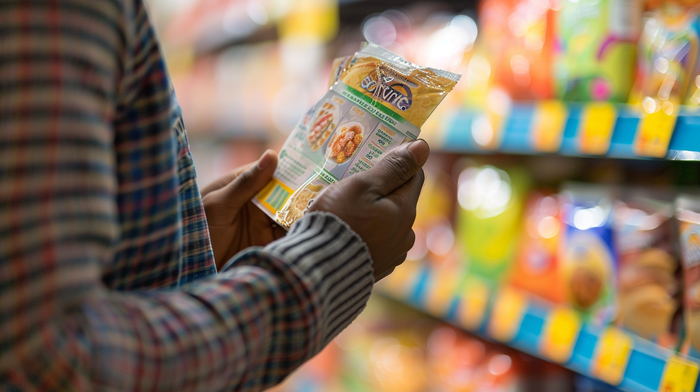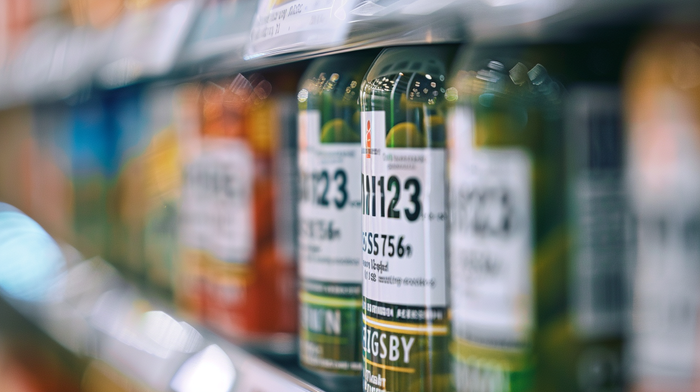Como ler os rótulos dos produtos para ter uma alimentação mais saudável?

Ler rótulos de alimentos pode parecer uma tarefa tão complicada quanto decifrar hieróglifos antigos. No entanto, saber como interpretar corretamente as informações contidas nas embalagens é fundamental para tomar decisões informadas sobre nossa saúde e nutrição. No mundo de hoje, repleto de alimentos processados e ingredientes complexos, essa habilidade se torna essencial. Neste artigo, veremos como ler os rótulos dos produtos para escolher as opções mais saudáveis.
Entendendo a lista de ingredientes
A primeira etapa da leitura do rótulo é prestar atenção à lista de ingredientes. Os ingredientes do rótulo são listados em ordem decrescente, da maior para a menor quantidade. Se o primeiro ingrediente for açúcar, xarope de glicose-frutose ou outro tipo de adoçante, isso pode significar que o produto é altamente processado e contém muito açúcar adicionado. Procure produtos em que grãos integrais, frutas, vegetais ou proteínas magras estejam no topo da lista.

Compreensão das informações nutricionais
Outro elemento importante do rótulo é a tabela nutricional. Ela fornece informações sobre o conteúdo calórico do produto, a quantidade de gorduras, carboidratos (inclusive açúcares) e proteínas. É fundamental prestar atenção não apenas ao total de calorias, mas também ao tipo e à qualidade dos nutrientes. Por exemplo, um produto pode ter poucas calorias, mas ser rico em açúcar e pobre em proteínas, o que não o torna uma boa opção para quem está tentando se alimentar de forma saudável.
Porções e tamanhos de porções
Muitas pessoas não percebem que as informações nutricionais no rótulo se referem a um tamanho de porção específico, que geralmente é muito menor do que o que realmente consumimos. Prestar atenção ao tamanho das porções e ao número de porções em uma embalagem é essencial para avaliar com precisão quantas calorias e nutrientes estamos realmente consumindo. Se ignorarmos essas informações, podemos facilmente exceder a ingestão diária recomendada de calorias e nutrientes.

Verificação de datas de validade
As datas de validade são outro elemento importante ao qual se deve prestar atenção ao ler os rótulos. Os produtos alimentícios, especialmente os frescos, têm um prazo de validade limitado. O consumo de produtos fora do prazo de validade pode ser perigoso para sua saúde. Sempre verifique as datas para ter certeza de que o produto é fresco e seguro para consumo.

Evitando as armadilhas do marketing
Os fabricantes costumam usar vários truques de marketing para convencer os consumidores a comprar seus produtos, mesmo que eles não sejam a opção mais saudável. Termos como "natural", "sem adição de açúcar" ou "rico em fibras" podem ser enganosos. É importante não se guiar apenas pelas promessas da embalagem, mas verificar cuidadosamente a lista de ingredientes e a tabela nutricional para garantir que o produto realmente atenda às nossas expectativas de uma dieta saudável.
Resumo
Ler os rótulos dos alimentos é uma habilidade essencial para quem quer se alimentar de forma saudável e fazer escolhas informadas sobre os produtos. Prestar atenção às listas de ingredientes, tabelas nutricionais, tamanhos de porções, datas de validade e evitar armadilhas de marketing são aspectos fundamentais que o ajudarão a fazer melhores escolhas alimentares. Lembre-se de que a alimentação saudável começa na loja, com a escolha dos produtos certos.




